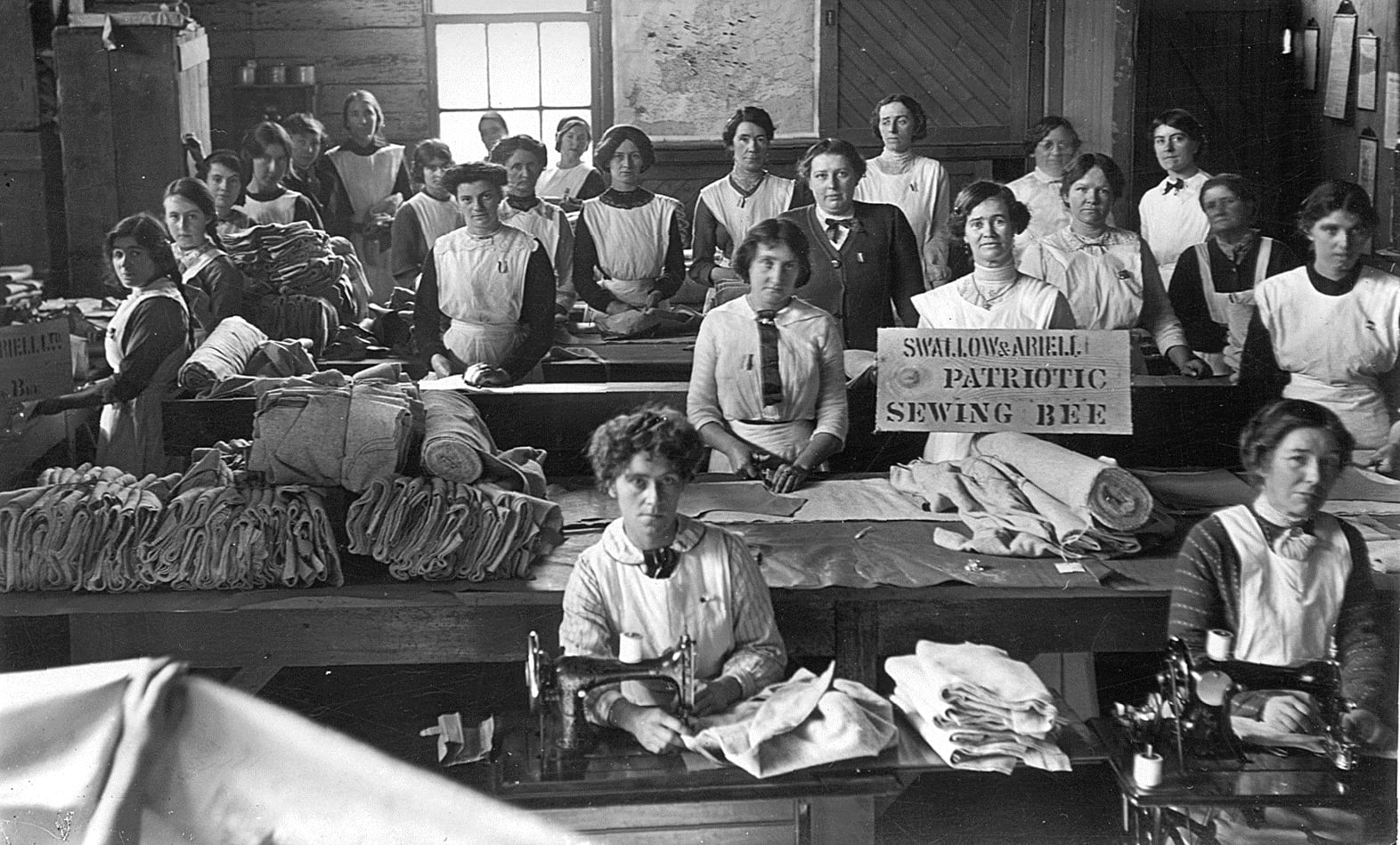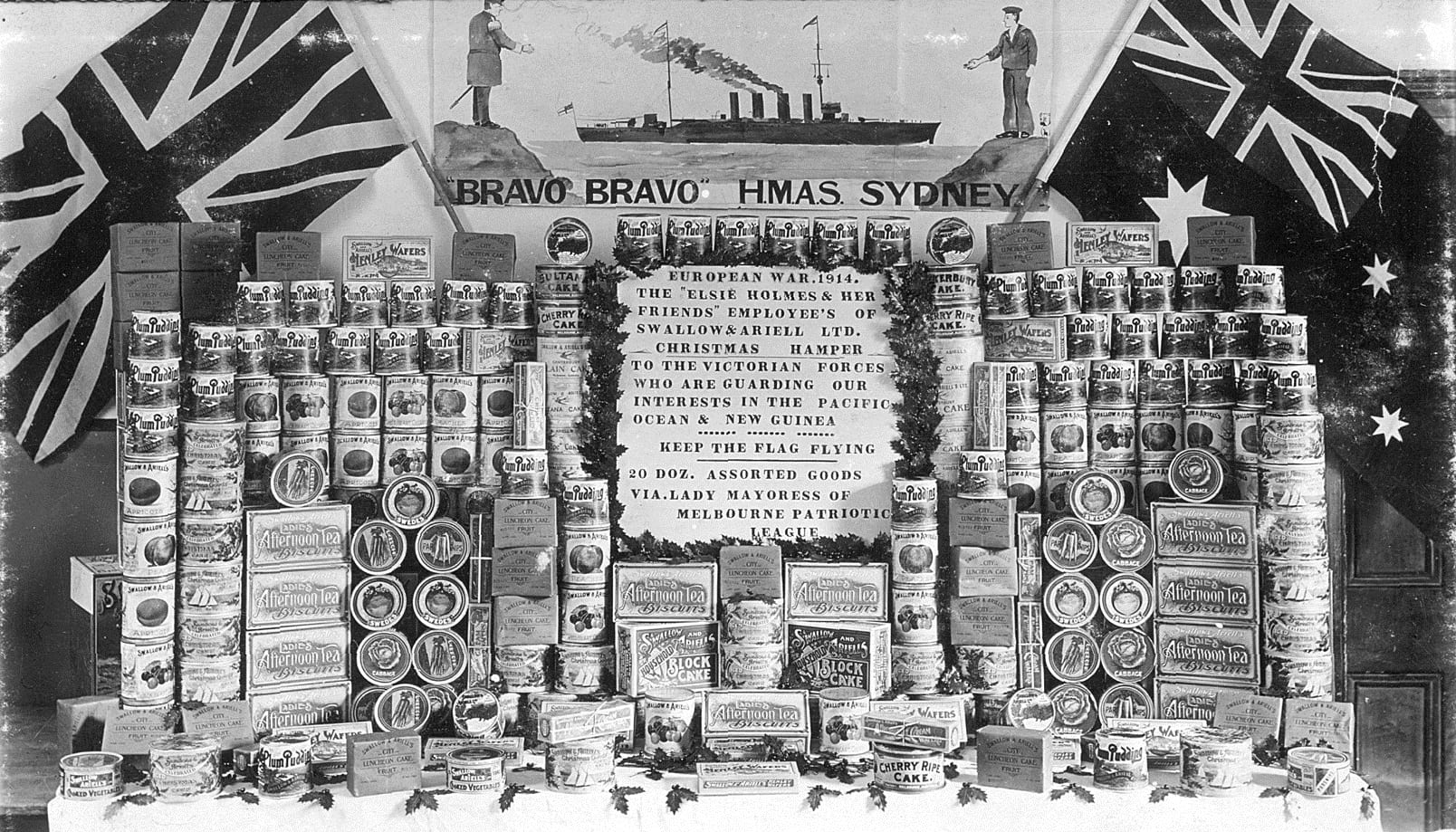‘We will help until the war is won’
During the anniversaries of World War One we reflect on the many aspects of war and its impact. As well as diaries and mementos of servicemen, the University of Melbourne Archives holds a range of material relating to work done on the home front to support those serving in the war. This took many guises, from women working, children participating in fundraising drives and communities rallying together to support the business of war.

Swallow & Ariell, a prominent Victorian biscuit manufacturing company founded by Thomas Swallow in 1858, was one such business whose workers did much for the war effort. A group of female employees at Swallow & Ariell lead by Miss Elsie Holmes, established the ‘Busy Bees’, and worked with the Red Cross and the Lady Mayoress of Melbourne Patriotic League to coordinate substantial fundraising campaigns to send comfort and aid to the front.

By 1880 Swallow & Ariell was producing 150 different lines of biscuits, and by the start of the ‘Great War’ in 1914 popular products were Arrowroot Milks, Coffee Cremes, Honey Jumble Cakes and Dudley Wafers. Along with shortbread, cigarettes and chewing gum, Christmas puddings were sent as part of 500 billies filled with Christmas cheer and 110 Christmas stockings made for the Australian Navy. Flannel shirts, knitted socks and children’s garments were made by an expanding group of volunteers to assist not only servicemen but also those in Europe affected by the war.


The significance of this work on the home front is found in the business records of the Swall & Ariell collection. Correspondence files tell of prisoners of war receiving packages from Melbourne via the Red Cross and Australian Christmas puddings enjoyed by soldiers awaiting action on small Greek Isles. In 1917 Sergeant Thos. Greenwood on the H.M.A.S “Australia” writes, “If you could only realise the amount of pleasure and lightheartedness that has resulted, you would certainly be assured that the enterprise was a monster success. That you and all your party of ‘Busy Bees’ may live long lives and very happy ones is (…) my fervent wish” (Letter to Miss Elsie Holmes, 1917, Unit 41, Swallow & Ariell Collection, 1961.0035, University of Melbourne Archives).

The Swallow & Ariell Collection has recently been listed at box level and the finding aid can be located via our online catalogue http://go.unimelb.edu.au/do9n For more information on UMA’s holdings of material relating to World War One, refer to the subject guide, http://gallery.its.unimelb.edu.au/imu/imu.php?request=home




